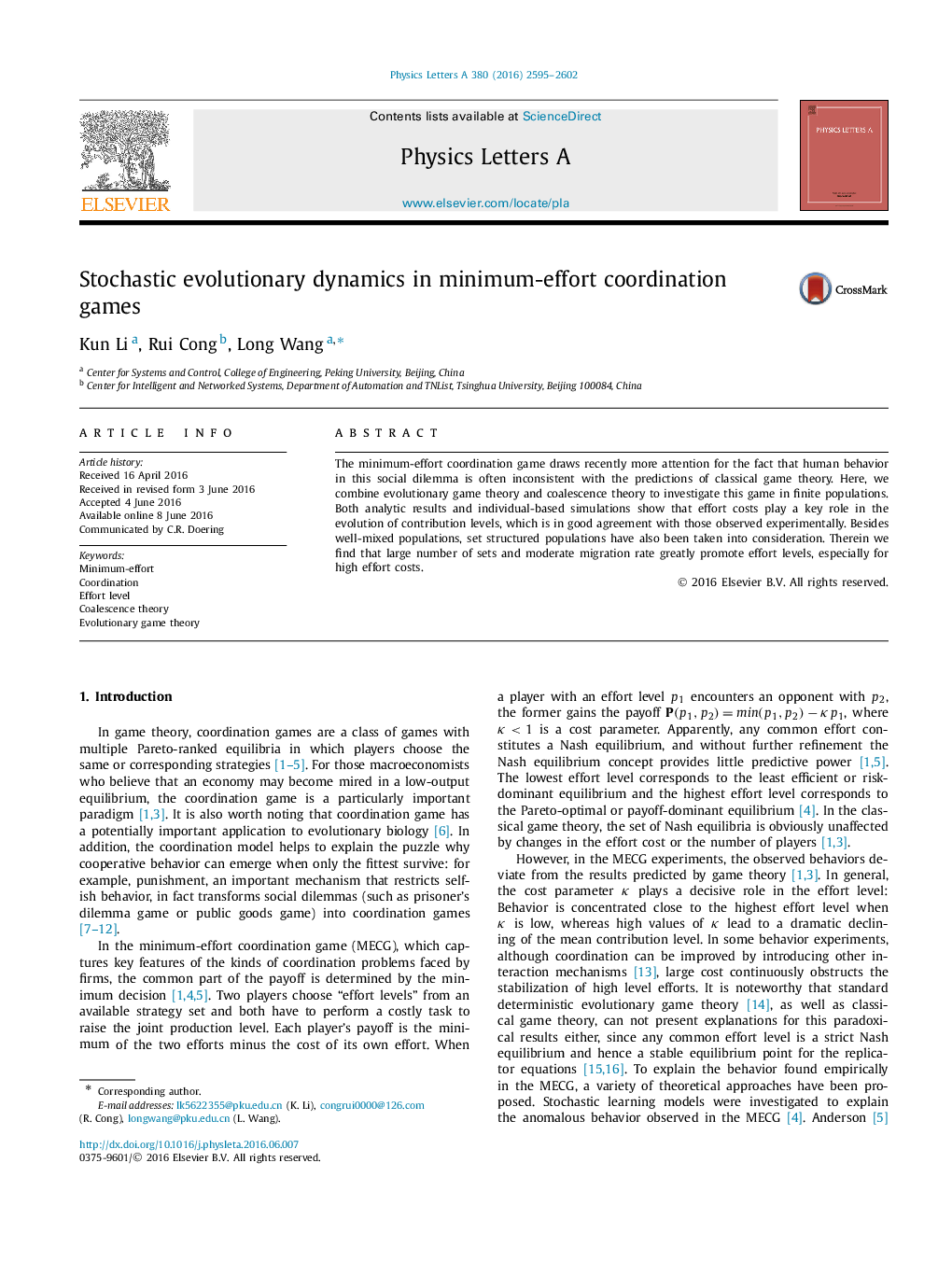| Article ID | Journal | Published Year | Pages | File Type |
|---|---|---|---|---|
| 1866687 | Physics Letters A | 2016 | 8 Pages |
•We institute an analytical model to study the evolution of effort level in the minimum-effort coordination games.•Under weak selection, we can obtain the most common strategy analytically for any mutation rate.•Conditions for higher effort levels to be favored by selection are specified.•For set-structured populations, large number of sets and moderate migration rate greatly promote effort levels.
The minimum-effort coordination game draws recently more attention for the fact that human behavior in this social dilemma is often inconsistent with the predictions of classical game theory. Here, we combine evolutionary game theory and coalescence theory to investigate this game in finite populations. Both analytic results and individual-based simulations show that effort costs play a key role in the evolution of contribution levels, which is in good agreement with those observed experimentally. Besides well-mixed populations, set structured populations have also been taken into consideration. Therein we find that large number of sets and moderate migration rate greatly promote effort levels, especially for high effort costs.
